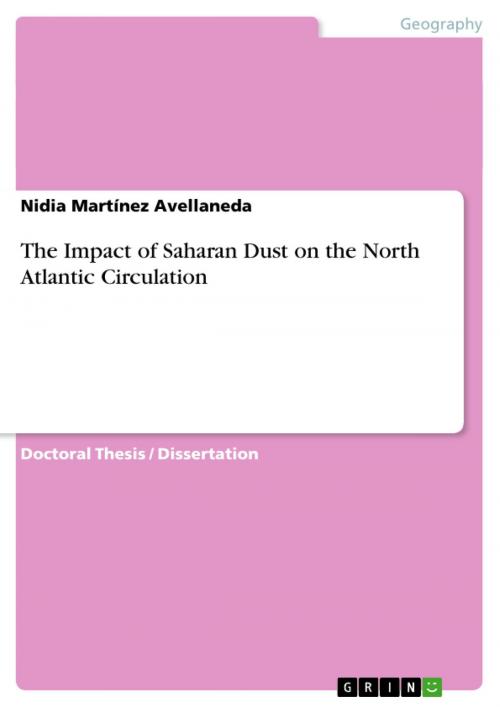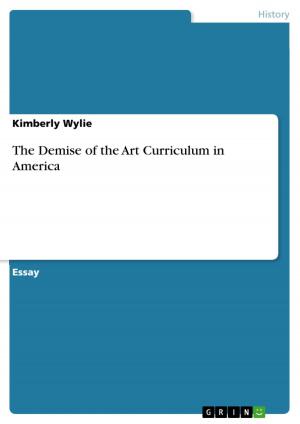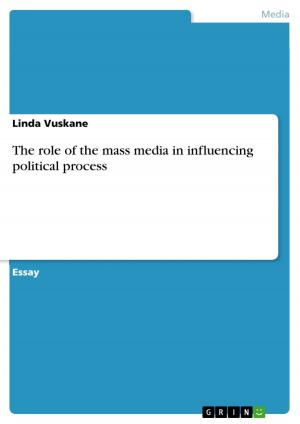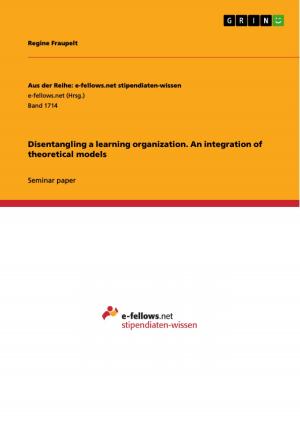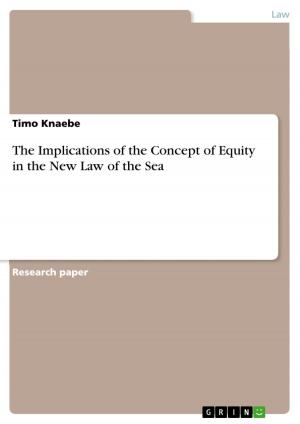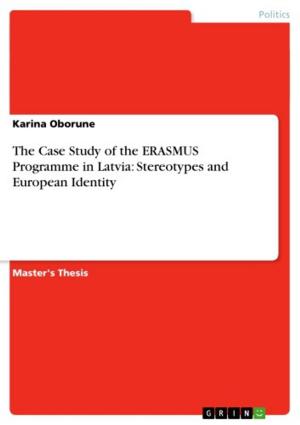The Impact of Saharan Dust on the North Atlantic Circulation
Nonfiction, Science & Nature, Science, Other Sciences, Meteorology| Author: | Nidia Martínez Avellaneda | ISBN: | 9783640555970 |
| Publisher: | GRIN Publishing | Publication: | March 5, 2010 |
| Imprint: | GRIN Publishing | Language: | English |
| Author: | Nidia Martínez Avellaneda |
| ISBN: | 9783640555970 |
| Publisher: | GRIN Publishing |
| Publication: | March 5, 2010 |
| Imprint: | GRIN Publishing |
| Language: | English |
Doctoral Thesis / Dissertation from the year 2010 in the subject Geography / Earth Science - Meteorology, Aeronomy, Climatology, grade: Sehr Gut, University of Hamburg (Institute of Oceanography), language: English, abstract: The erosion of Saharan soil is the World's largest annual source of mineral dust aerosols, resulting in a deposition of more than 40% of the global atmospheric dust into the North Atlantic (NA). By changing the atmospheric opacity, mineral dust can alter the shortwave radiative forcing at the surface of the ocean, altering the ocean mixed layer heat budget and therefore affecting the sea surface temperature (SST). Moreover, changes of the total amount of energy received at the ocean surface have an impact on the ocean circulation. In this thesis we combine several satellite observations, in-situ radiation measurements, a 1D mixed layer model of the ocean, and various versions of a 3D general ocean circulation model, to study the impact of Saharan dust on the circulation of the NA. A buoyancy source generated by realistic dust-induced shortwave flux anomalies is imposed in the eastern NA and the differences between this simulation and an unperturbed one are investigated in terms of the ocean dynamical adjustment and changes in the Atlantic Meridional Overturning Circulation (AMOC). A joint analysis of aerosol optical depth retrievals from the MODIS sensor and SST from the TMI sensor for the period 2000-2006 shows a decrease in SST of 0.2° to 0.4°C simultaneously with, or shortly after, strong dust outbreaks, which is consistent with an independent estimate of SST decrease simulated by a local 1D mixed layer model. A comparison between observed TMI SST fields and simulated SSTs with an eddy-permitting model of the NA suggests a local cooling of about 0.5°C on sub-seasonal to interannual time-scales. Results of the 3D simulations show that an advection of the ocean properties ocurs in response to the buoyancy source in the eastern subtropical NA. The eddies and baroclinic instabilities present in the ocean advect the signal towards the west and back towards the east. Once they have reached the African coast, they trigger westward propagating Rossby waves. The time-mean differences of AMOC between the perturbed and unperturbed simulations show an increased meridional transport at 38°N and 43°N of 0.55 and 0.45 Sv, respectively, and a decreased AMOC at 40°N and 45°N of 0.2 Sv. We conclude that the effect of Saharan dust should be incorporated in ocean numerical simulations, specially under the frame of climate change studies when a changing dust load of the atmosphere in response to a changing climate could be possible.
Doctoral Thesis / Dissertation from the year 2010 in the subject Geography / Earth Science - Meteorology, Aeronomy, Climatology, grade: Sehr Gut, University of Hamburg (Institute of Oceanography), language: English, abstract: The erosion of Saharan soil is the World's largest annual source of mineral dust aerosols, resulting in a deposition of more than 40% of the global atmospheric dust into the North Atlantic (NA). By changing the atmospheric opacity, mineral dust can alter the shortwave radiative forcing at the surface of the ocean, altering the ocean mixed layer heat budget and therefore affecting the sea surface temperature (SST). Moreover, changes of the total amount of energy received at the ocean surface have an impact on the ocean circulation. In this thesis we combine several satellite observations, in-situ radiation measurements, a 1D mixed layer model of the ocean, and various versions of a 3D general ocean circulation model, to study the impact of Saharan dust on the circulation of the NA. A buoyancy source generated by realistic dust-induced shortwave flux anomalies is imposed in the eastern NA and the differences between this simulation and an unperturbed one are investigated in terms of the ocean dynamical adjustment and changes in the Atlantic Meridional Overturning Circulation (AMOC). A joint analysis of aerosol optical depth retrievals from the MODIS sensor and SST from the TMI sensor for the period 2000-2006 shows a decrease in SST of 0.2° to 0.4°C simultaneously with, or shortly after, strong dust outbreaks, which is consistent with an independent estimate of SST decrease simulated by a local 1D mixed layer model. A comparison between observed TMI SST fields and simulated SSTs with an eddy-permitting model of the NA suggests a local cooling of about 0.5°C on sub-seasonal to interannual time-scales. Results of the 3D simulations show that an advection of the ocean properties ocurs in response to the buoyancy source in the eastern subtropical NA. The eddies and baroclinic instabilities present in the ocean advect the signal towards the west and back towards the east. Once they have reached the African coast, they trigger westward propagating Rossby waves. The time-mean differences of AMOC between the perturbed and unperturbed simulations show an increased meridional transport at 38°N and 43°N of 0.55 and 0.45 Sv, respectively, and a decreased AMOC at 40°N and 45°N of 0.2 Sv. We conclude that the effect of Saharan dust should be incorporated in ocean numerical simulations, specially under the frame of climate change studies when a changing dust load of the atmosphere in response to a changing climate could be possible.
